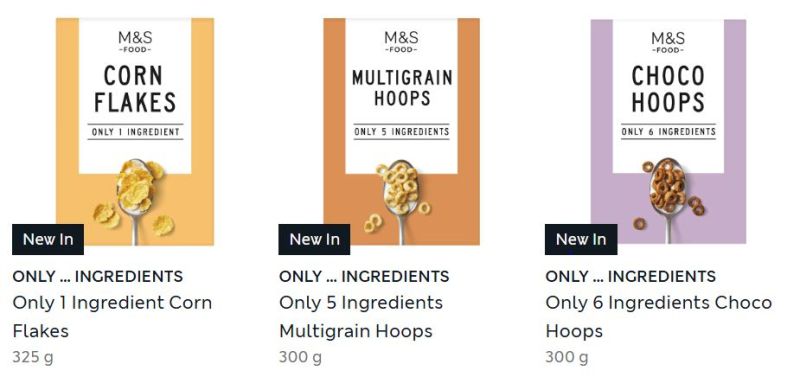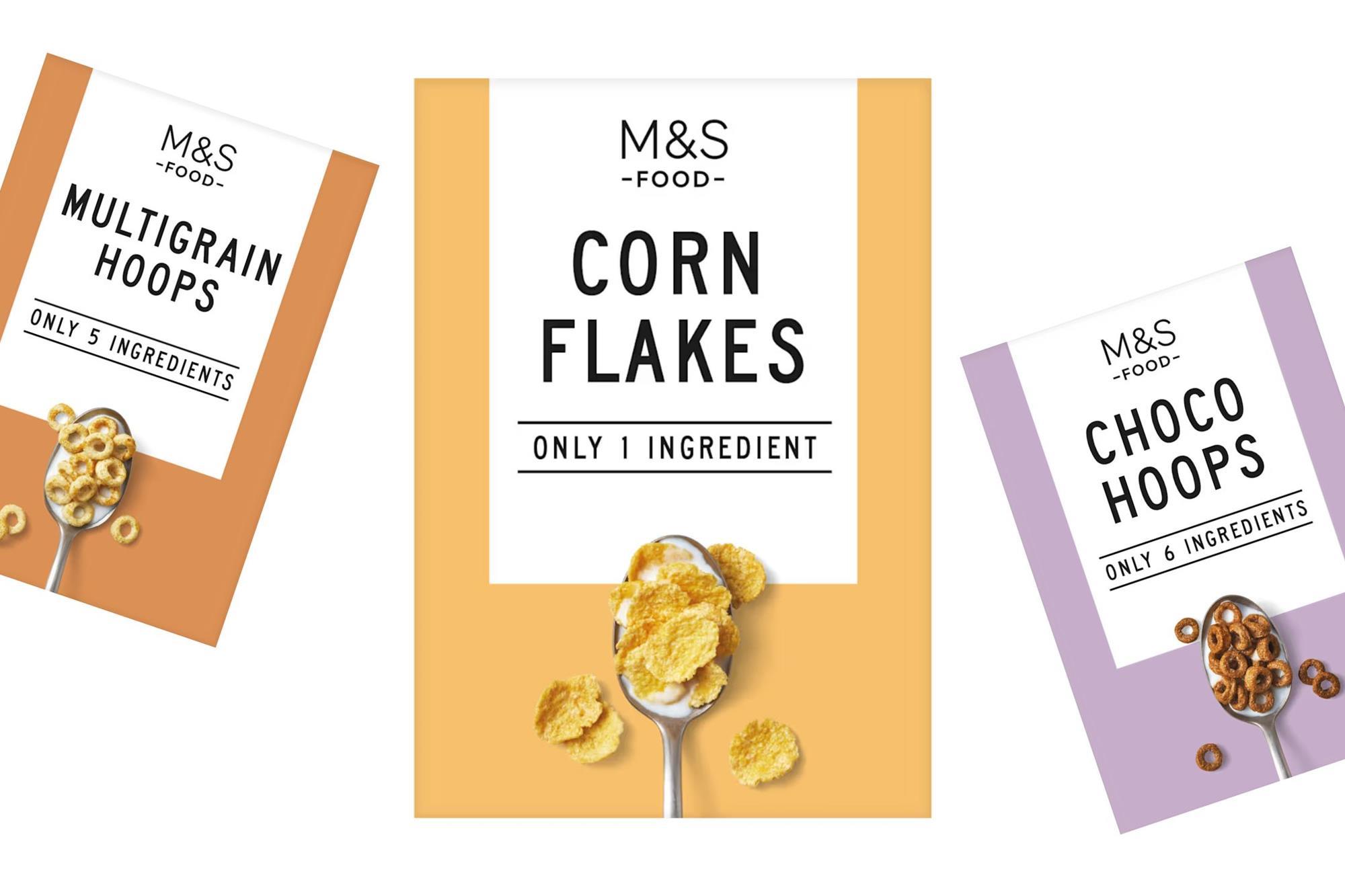Marks & Spencer (M&S) recently launched a new one-ingredient cereal, made solely from wholegrain wheat, which has garnered attention for its simplicity. This move aligns with the brand’s push to offer “clean” food options, free from unnecessary additives and preservatives. It follows another recent product that sparked debate: M&S’s “5-ingredient” chocolate bar, which, upon closer inspection, actually contains nine ingredients. While both products are marketed as healthier alternatives due to their minimal ingredients, there’s more to the story when it comes to nutrition and transparency.
The One-Ingredient Cereal: Simplicity Doesn’t Equal Better Nutrition
The appeal of M&S’s one-ingredient cereal lies in its simplicity. With only wholegrain wheat as its sole ingredient, it promises a straightforward, natural product free from added sugars, preservatives, or artificial ingredients. On the surface, this seems like a win for consumers looking to cut down on processed foods.
However, just because a product contains only one ingredient, it doesn’t automatically mean it’s the healthiest option. While whole grains are undeniably a nutritious choice, rich in fibre and essential vitamins, the cereal is low in protein and fats. These macronutrients are crucial for satiety and maintaining energy levels throughout the morning. A bowl of this cereal, eaten on its own with just milk, may leave you feeling hungry soon after. It’s the kind of food that can contribute to an imbalance in your diet if not paired with other nutrient-dense foods like fruits, nuts, or yoghurt.

Courtesy: Marks and Spenser
The key here is that health isn’t determined by a single ingredient or how simple a product is, but by how that food fits into your overall diet. The cereal might be a great base for a balanced breakfast, but eaten alone, it could leave you feeling unsatisfied, possibly leading to mid-morning snacking. Nutritional balance should always be the focus, rather than assuming simplicity equals health.
The “5-Ingredient” Chocolate Bar: A Lesson in Marketing vs. Transparency
M&S’s chocolate bar, marketed as containing only five ingredients, has caused a stir due to a discrepancy between the label and the actual contents. While the bar is branded as a cleaner, simpler alternative to more processed chocolates, an examination of the ingredients reveals that it actually contains nine ingredients. This includes things like cocoa butter, cocoa mass, sugar, and milk powder, meaning it’s not quite as minimalist as consumers were led to believe.

Courtesy: Marks and Spenser
This discrepancy raises important questions about transparency in food marketing. Consumers today are increasingly health-conscious and often gravitate towards products that appear simpler and less processed. The term “5-ingredient” suggests a cleaner, more natural product, which appeals to the growing demand for wholesome foods. However, when companies stretch the truth about the number of ingredients, it undermines consumer trust. The chocolate bar may still be a better option than some highly processed alternatives, but it’s important for shoppers to scrutinise labels rather than take marketing at face value.
The Health Halo Effect: Just Because It’s Simple Doesn’t Mean It’s Healthy
Both M&S products—the one-ingredient cereal and the “5-ingredient” chocolate bar—seem to benefit from what’s known as the “health halo” effect. This occurs when a product is perceived as healthier simply because it’s marketed as such, often due to its minimal ingredient list or natural claims. But the reality is that fewer ingredients or simplicity doesn’t automatically make a product nutritionally superior.
Take, for example, the common trend of “clean eating,” where foods with shorter ingredient lists are often assumed to be healthier. While it’s true that cutting back on artificial additives and sugars is beneficial, it’s equally important to consider what’s in those ingredients. A product with fewer, but still nutrient-poor, ingredients may not offer the balanced nutrition you need.
Health Isn’t Just About Ingredients—It’s About Balance
The key takeaway from both M&S products is that health isn’t just about ingredient lists. It’s about finding balance and variety in your diet. While one-ingredient foods may offer a cleaner option, they might lack other essential nutrients. For example, the one-ingredient cereal may be high in fibre, but if it’s low in protein or fats, it may not be a satisfying meal on its own. Similarly, the “5-ingredient” chocolate bar, while made with fewer ingredients than many processed chocolate bars, still contains sugar and other processed components that aren’t ideal for a health-focused diet.
In both cases, it’s crucial to remember that nutrition isn’t just about simplicity—it’s about the overall composition of your meals. A minimalist product may be a good option when combined with other wholesome ingredients to create a balanced, nutrient-dense meal. But relying on such products without considering the larger picture of your nutritional needs can lead to unbalanced eating habits.
Conclusion: Fewer Ingredients, Yes—But Don’t Fall for the Hype
M&S’s move towards offering one-ingredient and minimalist products is certainly a step in the right direction, especially for those looking to cut down on processed foods. However, just because a product has fewer ingredients doesn’t mean it’s automatically healthier. In fact, the real question should be whether the product provides balanced nutrition that supports your health goals.
As consumers, it’s important to remain critical of food marketing that promotes simplicity without offering full transparency. Whether it’s the one-ingredient cereal or the “5-ingredient” chocolate bar, we should focus on how these foods fit into a larger, balanced diet, rather than assuming that simplicity automatically equals health.
For more information
https://www.epda-design.com/news/what-m-s-new-packaging-says-about-transparency

